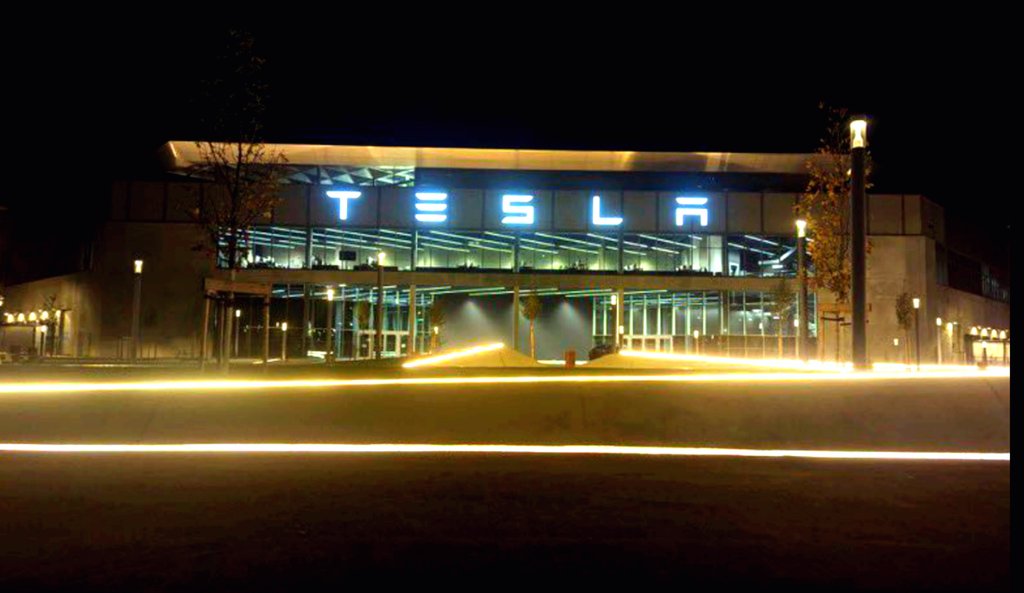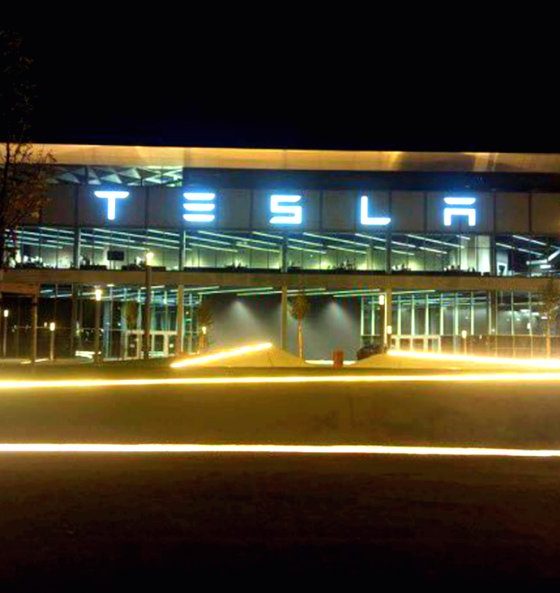

News
Tesla Giga Berlin meeting highlights works council stress, 65,000 lost mugs
A recent staff meeting at Tesla’s Gigafactory Berlin-Brandenburg highlighted union pressure following the company’s latest works council election, along with as many as 65,000 mugs that have disappeared from the plant.
During a staff meeting a few weeks ago, Tesla Giga Berlin Director of Manufacturing Andre Thierig said that as many as 65,000 mugs had disappeared from the plant since it began production in March 2022, according to the German publication Handelsblatt, which obtained audio recordings of the meeting.
“I’m just going to give you a figure,” Thierig said during the meeting, which took place on July 4 (via DW). “We’ve bought 65,000 coffee mugs since we started production here. 65.000! Statistically speaking, each of you already has five Ikea coffee cups at home.
“I’m really tired of approving orders to buy more coffee cups,” he added, to which employees laughed and applauded.
At the time of writing, Thierig has not yet responded to Teslarati’s request for comment on the mugs, though he did reference the original story in a recent post on his LinkedIn page. Rather, he directed away from the media’s recent attention on the mugs, and instead toward Giga Berlin’s new Giga Gym for employees.
“Whilst the whole world thinks we are only busy with mugs, we actually care about the most important asset of our Gigafactory – our people,” Thierig wrote in the post. “We listened to their feedback and finally finished our newest employee facility.
“Today, we celebrated the pre-opening of our Giga Gym! Surely one of the coolest spots in the entire factory. Great design and great work by all involved teams. It is going to be fun!”
Tesla Giga Berlin’s expansion plan remain a divisive topic in Grunheide
The Handelsblatt report also shared details regarding Giga Berlin’s recent works council election held in March, another item addressed in the recorded meeting. Since then, some at the factory have expressed negative sentiments toward union IG Metall, including re-elected Works Council Head Michaela Schmitz.
“I’m trying to put it charmingly,” Schmitz said during the meeting. “Unfortunately, we have members of the works council here who tend to allow themselves to be exploited by the union from outside.
“And they’re trying to assert the interests of the union along the way. In the end, of course, this prevents us from achieving great results for you again.”
The news comes after IG Metall candidates secured the most seats in the March works council election, but not enough to be a majority.
IG Metall’s candidates gained 3,516 votes in the election, while candidates from a rival group called Giga United garnered 3,201 votes. A third group, dubbed One Team, landed 1,106 votes. Thierig went on to thank employees for having such a high voter turnout, and for opting not to unionize Giga Berlin.
“In the works council election that has just ended, the majority of our workforce spoke out against a trade union works council,” he wrote in a LinkedIn post. “I would like to thank all employees for a high voter turnout of almost 80% and their vote for an independent future for the Gigafactory of Berlin-Brandenburg. We will continue to master all challenges together in the future.”
What are your thoughts? Let me know at zach@teslarati.com, find me on X at @zacharyvisconti, or send us tips at tips@teslarati.com.

News
Tesla FSD fleet is nearing 7 billion total miles, including 2.5 billion city miles
As can be seen on Tesla’s official FSD webpage, vehicles equipped with the system have now navigated over 6.99 billion miles.

Tesla’s Full Self-Driving (Supervised) fleet is closing in on almost 7 billion total miles driven, as per data posted by the company on its official FSD webpage.
These figures hint at the massive scale of data fueling Tesla’s rapid FSD improvements, which have been quite notable as of late.
FSD mileage milestones
As can be seen on Tesla’s official FSD webpage, vehicles equipped with the system have now navigated over 6.99 billion miles. Tesla owner and avid FSD tester Whole Mars Catalog also shared a screenshot indicating that from the nearly 7 billion miles traveled by the FSD fleet, more than 2.5 billion miles were driven inside cities.
City miles are particularly valuable for complex urban scenarios like unprotected turns, pedestrian interactions, and traffic lights. This is also the difference-maker for FSD, as only complex solutions, such as Waymo’s self-driving taxis, operate similarly on inner-city streets. And even then, incidents such as the San Francisco blackouts have proven challenging for sensor-rich vehicles like Waymos.
Tesla’s data edge
Tesla has a number of advantages in the autonomous vehicle sector, one of which is the size of its fleet and the number of vehicles training FSD on real-world roads. Tesla’s nearly 7 billion FSD miles then allow the company to roll out updates that make its vehicles behave like they are being driven by experienced drivers, even if they are operating on their own.
So notable are Tesla’s improvements to FSD that NVIDIA Director of Robotics Jim Fan, after experiencing FSD v14, noted that the system is the first AI that passes what he described as a “Physical Turing Test.”
“Despite knowing exactly how robot learning works, I still find it magical watching the steering wheel turn by itself. First it feels surreal, next it becomes routine. Then, like the smartphone, taking it away actively hurts. This is how humanity gets rewired and glued to god-like technologies,” Fan wrote in a post on X.
News
Tesla starts showing how FSD will change lives in Europe
Local officials tested the system on narrow country roads and were impressed by FSD’s smooth, human-like driving, with some calling the service a game-changer for everyday life in areas that are far from urban centers.

Tesla has launched Europe’s first public shuttle service using Full Self-Driving (Supervised) in the rural Eifelkreis Bitburg-Prüm region of Germany, demonstrating how the technology can restore independence and mobility for people who struggle with limited transport options.
Local officials tested the system on narrow country roads and were impressed by FSD’s smooth, human-like driving, with some calling the service a game-changer for everyday life in areas that are far from urban centers.
Officials see real impact on rural residents
Arzfeld Mayor Johannes Kuhl and District Administrator Andreas Kruppert personally tested the Tesla shuttle service. This allowed them to see just how well FSD navigated winding lanes and rural roads confidently. Kruppert said, “Autonomous driving sounds like science fiction to many, but we simply see here that it works totally well in rural regions too.” Kuhl, for his part, also noted that FSD “feels like a very experienced driver.”
The pilot complements the area’s “Citizen Bus” program, which provides on-demand rides for elderly residents who can no longer drive themselves. Tesla Europe shared a video of a demonstration of the service, highlighting how FSD gives people their freedom back, even in places where public transport is not as prevalent.
What the Ministry for Economic Affairs and Transport says
Rhineland-Palatinate’s Minister Daniela Schmitt supported the project, praising the collaboration that made this “first of its kind in Europe” possible. As per the ministry, the rural rollout for the service shows FSD’s potential beyond major cities, and it delivers tangible benefits like grocery runs, doctor visits, and social connections for isolated residents.
“Reliable and flexible mobility is especially vital in rural areas. With the launch of a shuttle service using self-driving vehicles (FSD supervised) by Tesla in the Eifelkreis Bitburg-Prüm, an innovative pilot project is now getting underway that complements local community bus services. It is the first project of its kind in Europe.
“The result is a real gain for rural mobility: greater accessibility, more flexibility and tangible benefits for everyday life. A strong signal for innovation, cooperation and future-oriented mobility beyond urban centers,” the ministry wrote in a LinkedIn post.
News
Tesla China quietly posts Robotaxi-related job listing
Tesla China is currently seeking a Low Voltage Electrical Engineer to work on circuit board design for the company’s autonomous vehicles.

Tesla has posted a new job listing in Shanghai explicitly tied to its Robotaxi program, fueling speculation that the company is preparing to launch its dedicated autonomous ride-hailing service in China.
As noted in the listing, Tesla China is currently seeking a Low Voltage Electrical Engineer to work on circuit board design for the company’s autonomous vehicles.
Robotaxi-specific role
The listing, which was shared on social media platform X by industry watcher @tslaming, suggested that Tesla China is looking to fill the role urgently. The job listing itself specifically mentions that the person hired for the role will be working on the Low Voltage Hardware team, which would design the circuit boards that would serve as the nervous system of the Robotaxi.
Key tasks for the role, as indicated in the job listing, include collaboration with PCB layout, firmware, mechanical, program management, and validation teams, among other responsibilities. The role is based in Shanghai.
China Robotaxi launch
China represents a massive potential market for robotaxis, with its dense urban centers and supportive policies in select cities. Tesla has limited permission to roll out FSD in the country, though despite this, its vehicles have been hailed as among the best in the market when it comes to autonomous features. So far, at least, it appears that China supports Tesla’s FSD and Robotaxi rollout.
This was hinted at in November, when Tesla brought the Cybercab to the 8th China International Import Expo (CIIE) in Shanghai, marking the first time that the autonomous two-seater was brought to the Asia-Pacific region. The vehicle, despite not having a release date in China, received a significant amount of interest among the event’s attendees.








